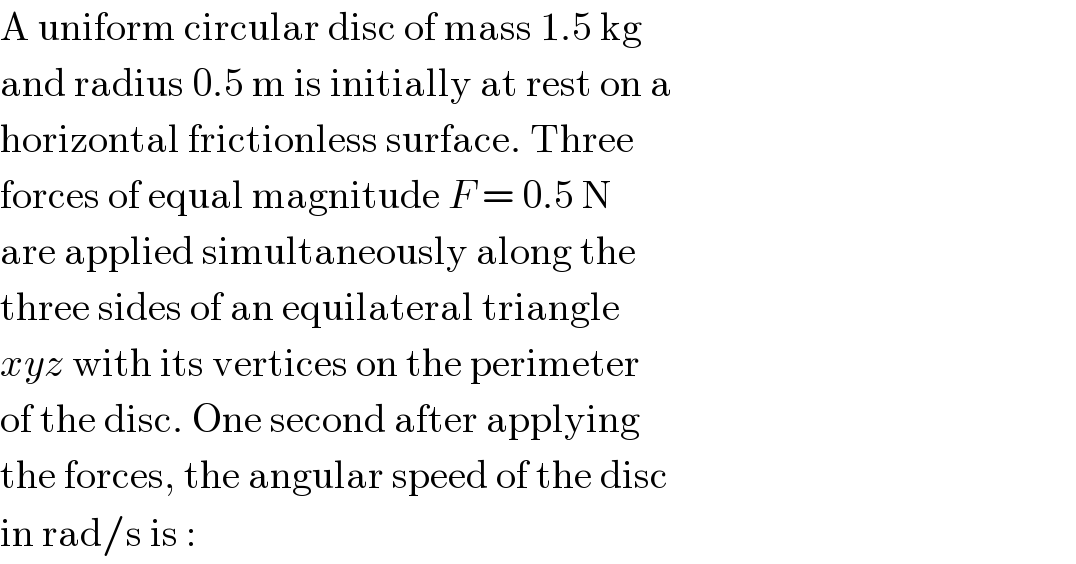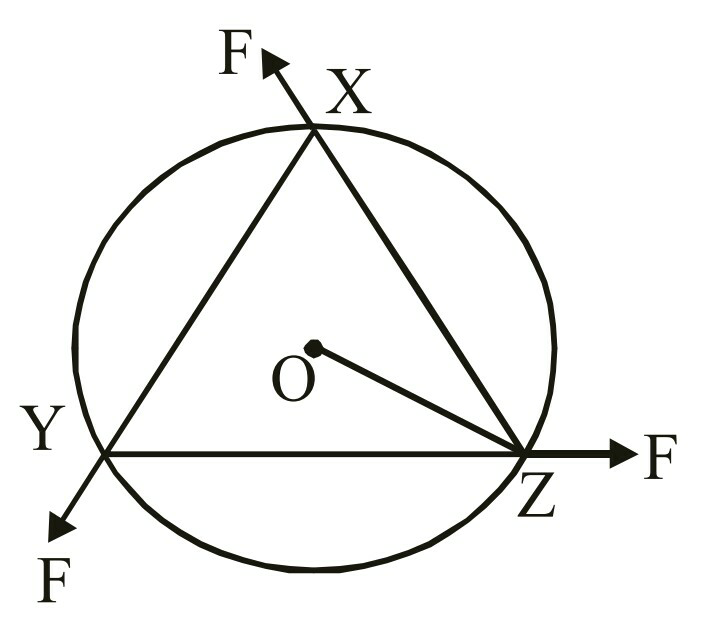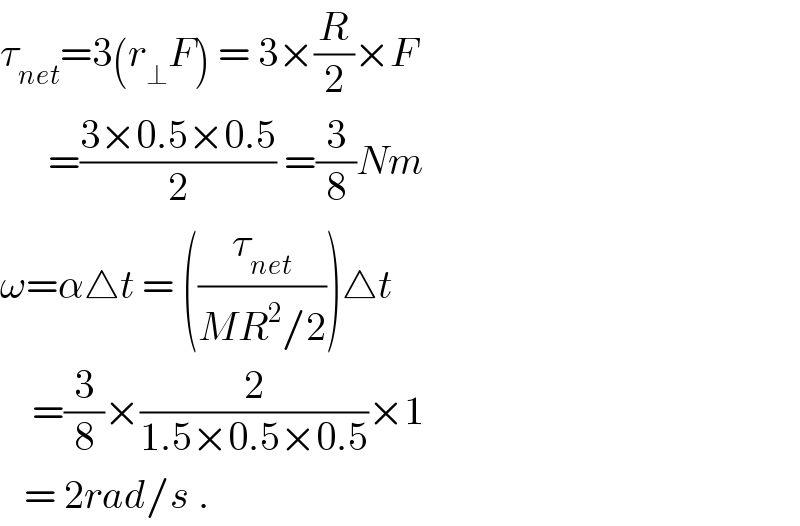
Question Number 24934 by Tinkutara last updated on 29/Nov/17

$$\mathrm{A}\:\mathrm{uniform}\:\mathrm{circular}\:\mathrm{disc}\:\mathrm{of}\:\mathrm{mass}\:\mathrm{1}.\mathrm{5}\:\mathrm{kg} \\ $$$$\mathrm{and}\:\mathrm{radius}\:\mathrm{0}.\mathrm{5}\:\mathrm{m}\:\mathrm{is}\:\mathrm{initially}\:\mathrm{at}\:\mathrm{rest}\:\mathrm{on}\:\mathrm{a} \\ $$$$\mathrm{horizontal}\:\mathrm{frictionless}\:\mathrm{surface}.\:\mathrm{Three} \\ $$$$\mathrm{forces}\:\mathrm{of}\:\mathrm{equal}\:\mathrm{magnitude}\:{F}\:=\:\mathrm{0}.\mathrm{5}\:\mathrm{N} \\ $$$$\mathrm{are}\:\mathrm{applied}\:\mathrm{simultaneously}\:\mathrm{along}\:\mathrm{the} \\ $$$$\mathrm{three}\:\mathrm{sides}\:\mathrm{of}\:\mathrm{an}\:\mathrm{equilateral}\:\mathrm{triangle} \\ $$$${xyz}\:\mathrm{with}\:\mathrm{its}\:\mathrm{vertices}\:\mathrm{on}\:\mathrm{the}\:\mathrm{perimeter} \\ $$$$\mathrm{of}\:\mathrm{the}\:\mathrm{disc}.\:\mathrm{One}\:\mathrm{second}\:\mathrm{after}\:\mathrm{applying} \\ $$$$\mathrm{the}\:\mathrm{forces},\:\mathrm{the}\:\mathrm{angular}\:\mathrm{speed}\:\mathrm{of}\:\mathrm{the}\:\mathrm{disc} \\ $$$$\mathrm{in}\:\mathrm{rad}/\mathrm{s}\:\mathrm{is}\:: \\ $$
Commented by Tinkutara last updated on 29/Nov/17

Commented by ajfour last updated on 29/Nov/17

$$\tau_{{net}} =\mathrm{3}\left({r}_{\bot} {F}\right)\:=\:\mathrm{3}×\frac{{R}}{\mathrm{2}}×{F} \\ $$$$\:\:\:\:\:\:=\frac{\mathrm{3}×\mathrm{0}.\mathrm{5}×\mathrm{0}.\mathrm{5}}{\mathrm{2}}\:=\frac{\mathrm{3}}{\mathrm{8}}{Nm} \\ $$$$\omega=\alpha\bigtriangleup{t}\:=\:\left(\frac{\tau_{{net}} }{{MR}^{\mathrm{2}} /\mathrm{2}}\right)\bigtriangleup{t} \\ $$$$\:\:\:\:=\frac{\mathrm{3}}{\mathrm{8}}×\frac{\mathrm{2}}{\mathrm{1}.\mathrm{5}×\mathrm{0}.\mathrm{5}×\mathrm{0}.\mathrm{5}}×\mathrm{1} \\ $$$$\:\:\:=\:\mathrm{2}{rad}/{s}\:. \\ $$
Commented by Tinkutara last updated on 30/Nov/17

$$\mathrm{Thank}\:\mathrm{you}\:\mathrm{Sir}! \\ $$
